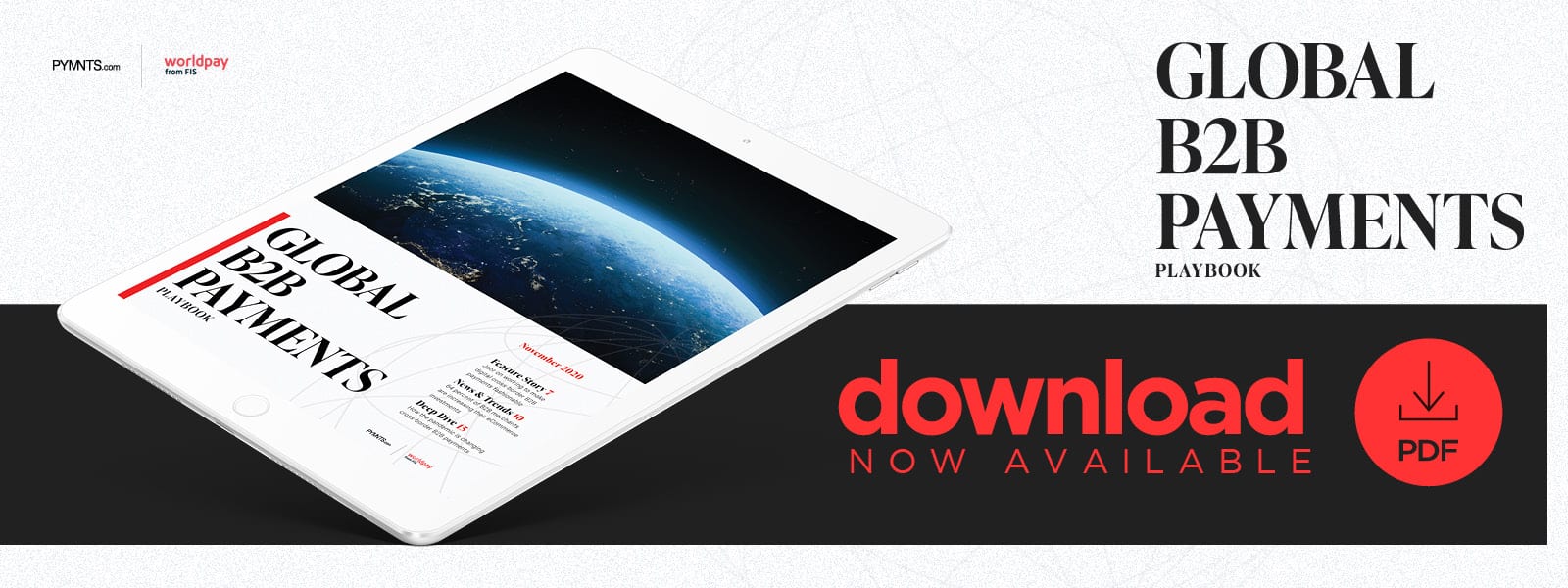How The Pandemic Is Accelerating The Push To Digital B2B Cross-Border Payments

International fashion shows have by and large disappeared over the past eight months, leaving fashion retailers scrambling to move in-person business digital. But success hinges on digitizing payments between fashion labels and wholesalers, CEO Kristin Savilia of fashion wholesale-management platform Joor tells PYMNTS in the inaugural edition of the Global B2B Payments Playbook.
Commerce has become more interconnected over the past few decades and supporting a healthy international business model is now key to helping companies in many industries stay competitive.
These firms have to navigate the ins and outs of various markets for consumers and also for the B2B payments between their suppliers or vendors.
Cross-border B2B payments must now move faster than ever because the pandemic is altering payment needs as well as how companies can interact, Kristin Savilia, CEO at fashion wholesale management platform Joor, explained in a PYMNTS interview. Joor allows fashion brands and retailers in 144 countries to conduct wholesale shopping and payments digitally. The company began enabling payments on its platform in January, just before numerous businesses started hunting for digital cross-border B2B solutions.
“What has changed is this is an industry that predominantly did payments offline, meaning you would do an order but then [the other business] had their own payment platform, which basically was somebody invoicing and making a bunch of phone calls and collecting credit card numbers,” Savilia said. “I won’t even call it a platform; it was the old-fashioned way. A lot of the industry still does that, but what Joor introduced was on-platform payments, and our results have been really strong.”
These changes have accelerated the jump to digital for B2B relationships in terms of payments as well as how retailers and brands approach cross-border operations as a whole.
Making B2B Payments Fashion-Forward
The pandemic has made providing seamless cross-border experiences even more essential for cross-border B2B companies, and this is in turn heightening the role of digital tools in the space. Failing to use such tools at any level in the fashion industry, for example, will likely result in severe financial consequences for brands or retailers. This is especially true for cross-border luxury fashion because it has traditionally been an in-person business that relies on international travel, Savilia explained.
“When you think about the old model of fashion weeks and trade shows, it is [exemplified by] a human being getting on an airplane, traveling to an event and walking around booths or looking at shows and then transacting kind of post event,” she said. “The two parties connect at the show, they meet each other, then they go leave the event and find a way to do business together.”
Pandemic-driven travel shutdowns and restrictions have caused many companies to search for ways to replicate business-critical events in a digital context. This prompted Joor to create a product called Joor Passport, which aggregates access to global fashion and trade shows in one place, enabling buyers to connect with brands globally using digital tools.
Cross-border B2B payments went through the same evolution, Savilia said, with brands that had been clinging to manual payments processes that involved in-person teams making notes on Excel documents suddenly more open to considering digital tools.
“Now you are in a situation where your competitor has adopted digital,” she said. “If you have not — [if] you are doing business right now on Excel and PowerPoint — you are just not going to do as well as a digital platform company. … It is just an obvious sales thing.”
Enabling payments experiences that could complement these new virtual showrooms and online connections is a natural next step, she said. Joor is now processing about $1.5 billion per month in wholesale transactions via credit cards and ACH payments, for example, and it allows payments to be made in about 100 currencies.
“The pandemic hit, and it accelerated doing [payments] on platform in a very enormous way,” Savilia said. “I would say that what would have taken us three years to get people onboarded was accelerated into just several months because the recognition came [that] this is the best way to do business [and] collect [their money], as opposed to [the] old-fashioned ways [because] you can track everything. It is reliable.”
The fashion industry, like many others, is not likely to forgo in-person business completely once the pandemic is over, but this does not mean that digital payments will fade into the background.
Mobile And Cross-Border Payments
Savilia said she does believe these digital changes are here to stay in the international fashion industry and that new or emerging payment methods will have greater impacts, even after in-person business and international travel return to a relative normal. Mobile payments represent one notable example, as optimizing B2B payments for mobile devices could enable buyers to transact in the moment when they begin frequenting fashion or trade shows again.
“There will be fashion weeks that come back — [and] they should, we want them to — but then mobile payments [get] big, right?” Savilia explained. “You need to be digital within the physical experience, but the [need for] pure digital does not go away either because [with] the extended reach people have seen, brands are not going to be like, ‘Well, now I am going to London fashion week, I do not want to be on the web anymore.’ So, these changes are permanent and good.”
Cross-border businesses are headed toward the omnichannel commerce and payments experiences that have been widely adopted in the land of consumer payments. This means that providing flexible payment methods that can be used across various channels and use cases will prove crucial to success in the space.

